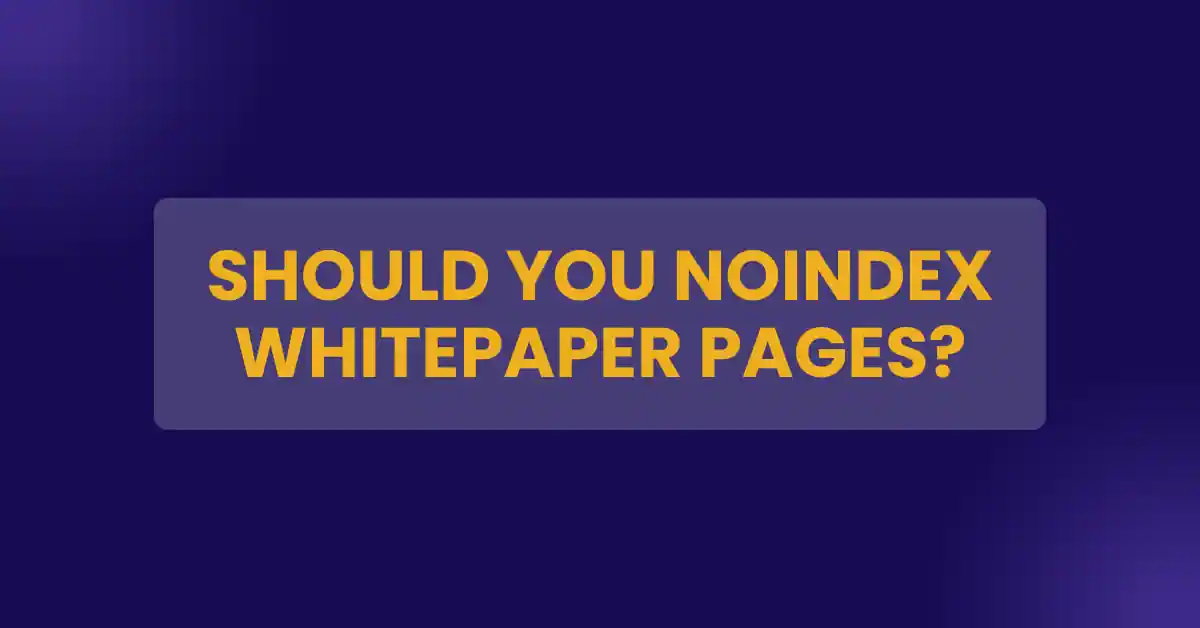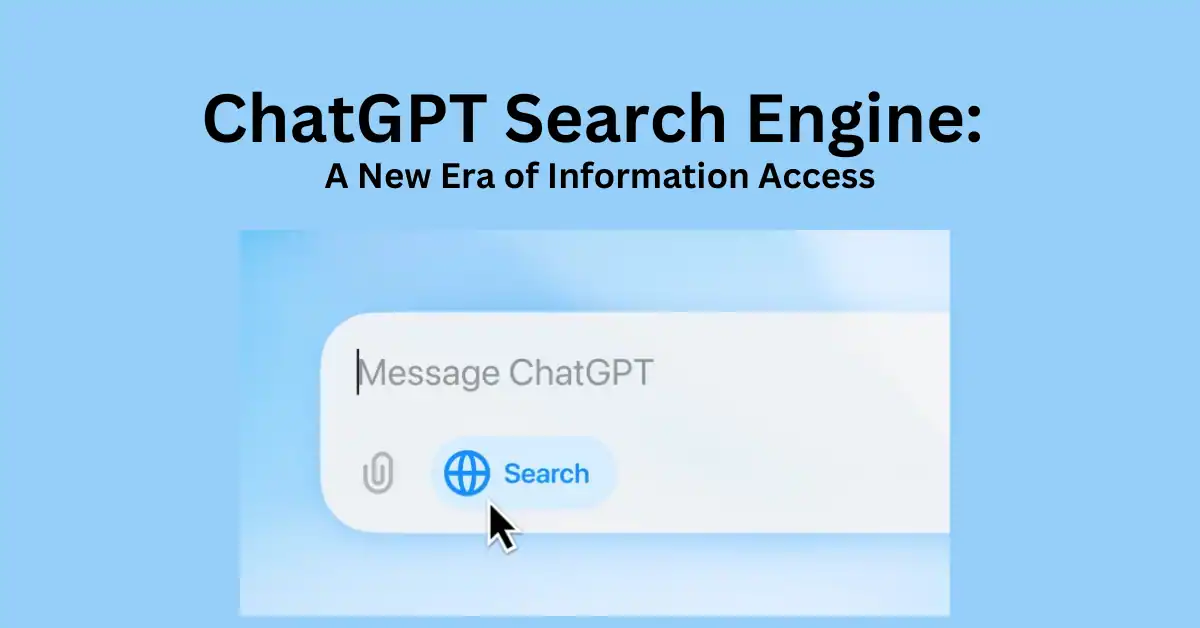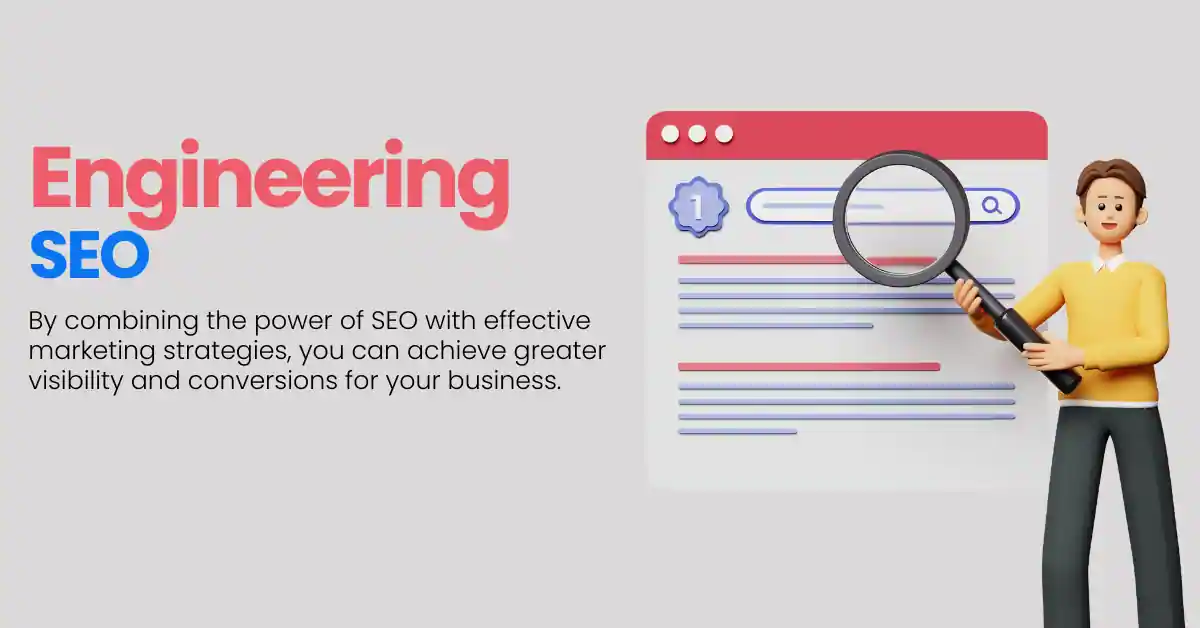Deciding whether to noindex whitepaper pages can be tricky. While whitepapers are valuable resources, not all need to appear in search results. In this article, we’ll explore when it’s best to keep whitepapers indexed and when noindexing can benefit your SEO strategy.
Table of Contents
ToggleWhat Is a Whitepaper?
Before diving into the noindex debate, it’s essential to understand what whitepapers are.
Purpose of Whitepapers
Whitepapers are in-depth reports or guides that focus on specific topics. Businesses often use them to demonstrate expertise, educate readers, or present solutions to particular problems.
Role of Whitepapers in Digital Marketing
Whitepapers can be a valuable tool in digital marketing strategies. They help generate leads, provide detailed information, and build authority. But their placement in search engine results can raise some SEO questions.
Importance of Indexing in SEO
The decision to index or noindex certain pages affects how your website performs on search engines.
How Search Engines Treat Indexed Pages
When a page is indexed, search engines like Google can find, crawl, and display it in search results. This is great for content that needs visibility, such as blogs and service pages.
Impact of Noindex on SEO
If a page is marked as noindex, search engines will not display it in search results. This means you are intentionally choosing to keep that content away from public search queries. So, why would anyone do this?
Reasons to Consider Noindexing Whitepaper Pages
There are several scenarios where noindexing whitepapers makes sense. Let’s look at a few.
Limited Audience
Whitepapers might be intended for a specific audience, such as existing clients or industry professionals. If the content isn’t relevant to a general audience, keeping it out of search engines might be wise.
Avoiding Duplicate Content Issues
Sometimes, the information in whitepapers overlaps with other content on your site. Noindexing can help you avoid duplicate content issues, which could harm your SEO.
Preserving Valuable Content
If your whitepaper contains exclusive insights or proprietary information, you might want to restrict it to your loyal audience rather than making it widely available.
Protecting Exclusive Resources
In many cases, whitepapers are used as lead magnets, where users need to provide their information (like email addresses) to access the document. If the page is indexed, people might bypass this step, reducing its value as a marketing tool.
When to Avoid Noindexing Whitepapers
Although noindexing can be helpful, there are situations where it’s not advisable.
SEO and Traffic Benefits
Whitepapers can attract organic traffic, especially if they target long-tail keywords. By noindexing them, you might miss out on potential visitors who are searching for the exact information you are providing.
Brand Awareness
Being visible on search engines can improve your brand’s credibility and recognition. If your whitepaper content showcases your authority in a niche, keeping it indexed may enhance your reputation.
How to Implement Noindex for Whitepaper Pages
If you decide that noindexing is the right strategy for your whitepapers, you need to know how to do it effectively.
Using Meta Robots Tag
One of the simplest ways to noindex a page is by adding a meta robots tag with content="noindex" in the HTML header. This tells search engines not to show the page in search results.
Through Robots.txt
You can also block search engines from indexing your whitepaper pages by specifying the URLs in your robots.txt file. However, this method doesn’t always guarantee that the page won’t be indexed.
Noindexing via WordPress Plugins
For WordPress users, plugins like Yoast SEO or All in One SEO Pack make noindexing easy. You can select which pages to noindex directly from your dashboard.
Best Practices for Whitepapers and SEO
If you’re handling whitepapers on your website, here are a few best practices to consider.
Gatekeeping Content
Make your whitepapers available behind a form submission. This ensures you collect leads while offering valuable content. Consider noindexing these landing pages to avoid cluttering search results with gated content.
Internal Linking Strategy
Even if you noindex your whitepaper pages, you can still link to them internally. This helps your audience navigate the site without necessarily showing the whitepaper on search results.
Conclusion
Deciding whether to noindex whitepaper pages depends on your goals. If your whitepapers are core content that drives traffic and enhances your SEO, keeping them indexed is the way to go. But if you want to protect exclusive content, avoid duplicate issues, or limit visibility, noindexing might be the right choice. Consider the pros and cons carefully, and make a decision that aligns with your overall content strategy.
FAQs
Q: Should I noindex all my whitepaper pages?
No, not necessarily. You should noindex whitepaper pages if they contain duplicate content, are exclusive resources, or target a limited audience. Otherwise, consider keeping them indexed for SEO benefits.
Q: Does noindex affect my site’s ranking?
Noindexing certain pages won’t harm your overall ranking, but it will prevent those specific pages from appearing in search results. This could impact your site’s traffic if those pages are key to your SEO strategy.
Q: How can I track noindexed whitepaper pages?
You can track noindexed pages through Google Search Console or analytics plugins. They’ll show which pages are blocked from indexing and whether search engines are following your instructions.
Q: What are the alternatives to noindexing?
Instead of noindexing, you can use canonical tags to avoid duplicate content issues or block the page via robots.txt if you don’t want it to appear in search results.
Q: Can I noindex a whitepaper without affecting SEO?
Yes. Noindexing won’t affect your overall SEO as long as you do it strategically. Use it on pages where visibility isn’t a priority, and make sure your key content remains indexable.






